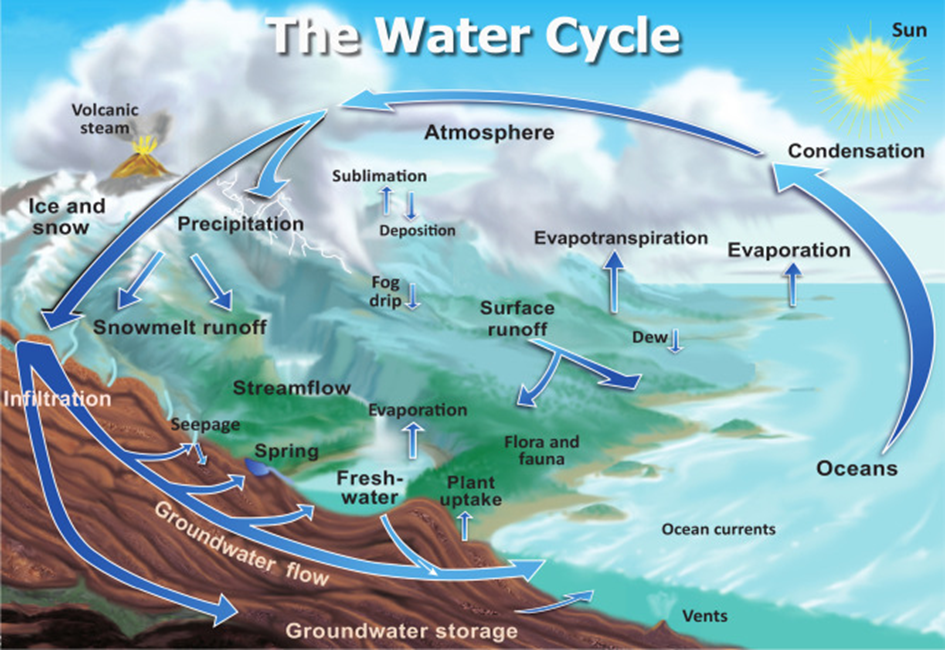
Voice of the Danube
10 December 2023
Exciting news from IAWD member Mozaika: They have been engaged in developing Artificial Intelligence (AI) methods with earth observation data to forecast river dynamics and hydrology for some time now. Part of the current project they have been contracted for by the European Space Agency is the operationalization of their Information System for Monitoring of Water Resources for Sustainable Exploitation of Rivers and Dams and its deployment in real-life daily monitoring of segments of the Danube, with IAWD contributing knowledge sharing and communication support. First results promise a convincing answer to questions about the reliability of forecasts obtained by AI in comparison to forecasts obtained by conventional methods.
The range of Artificial Intelligence applications grows by leaps and bounds. Mozaika, a Bulgarian data science company, explores the viability of AI for river dynamics and hydrology forecasting. The big question here is: Can AI systems really provide the level of reliability required for responsible decision-making by governments, executive agencies, river managers and dam operators? To determine how its Earth Observation for AI approach performs in comparison to traditional hydrological and hydrodynamic models, Mozaika compared predictions and results of different models and techniques on two rivers in the region, the Danube and Arda rivers.
Traditional hydrological models are simplifications of real-world systems like, e.g., surface water, soil water, wetlands, groundwater, and estuaries. They are widely used to understand and predict the flow and quality of water, and to manage water resources. A whole toolbox of such models is available. They typically consist of a series of equations that represent the major components of the hydrological cycle, including precipitation, evapotranspiration, infiltration, surface runoff, and groundwater flow.

Popular traditional hydrological models include Unit Hydrograph Models, often used for flood forecasting and estimating peak flow rates, SCS Curve Number, widely used in agricultural areas for estimating runoff volumes and soil moisture conditions, and Rational Method, commonly used in stormwater management and design of drainage systems. They are widely used because of their ability to produce reasonable results with limited data and for watersheds of limited size. However, they have their limitations when it comes to representing complex hydrological processes and accurately capturing spatial and temporal variations. This drives an increasing emphasis on more advanced hydrological models which aim to represent the detailed physics of the hydrological system, utilizing more data inputs and considering spatial heterogeneity. Nonetheless, traditional hydrological models remain useful tools in many practical applications, especially where limited data availability are key considerations.
Taking things to the next level, AI-based hydrological and hydrodynamic models incorporate artificial intelligence techniques, such as machine learning, deep learning and data-driven approaches, to enhance their accuracy and predictive capabilities. These models are capable of learning from observed data patterns, relationships, and nonlinearities, acquiring knowledge to improve the modeling process. AI-based models are particularly promising in situations where traditional models tend to get overwhelmed by complex and nonlinear relationships, spatial and temporal variability, and limited data availability.
AI-based techniques with special promise in hydrological and hydrodynamic modeling include:
- Machine learning algorithms that learn from historical data and make predictions of hydrological variables such as river flow, groundwater levels, and water quality parameters. Combined with traditional models, they help to improve calibration and forecasting accuracy.
- Data assimilation techniques that integrate various types of observed data (e.g., streamflow observations, remote sensing data, real-time sensor data) into hydrological or hydrodynamic models to reduce uncertainties and improve model predictions.
- Computational intelligence techniques explore parameter spaces to find the optimal set of model parameters to fit observed data, improving model performance.
- Deep learning utilizes neural networks with multiple layers to learn complex patterns and relationships from vast amounts of data. They can be applied in hydrodynamic modeling to simulate complex physical processes like wave propagation, coastal erosion, and sediment transport.
Speaking generally, AI application in hydrological and hydrodynamic modeling promises more accurate predictions, real-time monitoring, and improved decision-making in water resource management, flood forecasting, and environmental assessment. However, it is important to ensure that these models are properly trained, validated, and interpreted to ensure their reliability and avoid potential pitfalls associated with overfitting and data biases.
Mozaika’s approach applies earth observation data on a pipeline of neural networks architectures in a novel EO4AI method to forecast discharge and water levels with significant degrees of accuracy. The strategy in selecting and employing Earth observation data categories is based on the fact that river discharge and water levels depend on a variety of meteorological and environmental factors including, but not limited to, precipitation, snow cover, soil moisture, and vegetation index. Satellite data are a rich resource for this kind of information. Mozaika carried out experiments to generate forecasts for river discharge and water levels of the Danube and the Arda from historic satellite data of the meteorological features mentioned above, and in-situ measurements for water level and discharge ran through the pipeline of neural network architectures. These forecasts were then compared with traditional hydrological model forecasts, using the Nash–Sutcliffe Model Efficiency Coefficient, a standard measure of the predictive skill of hydrological models.
The experiments on the Danube produced very good results, with Nash-Suttcliffe coefficients between 0,97-0,99. Mozaika initially attributed these results to the size of the river and the large quantities of water discharged. However, applying the same forecast method on a smaller, and therefore more difficult to predict, body of water, the Arda river in Bulgaria, and comparing the performance with traditional forecast models, again produced promising and reliable results (see Figure 2).
 Figure 2: Predictions of discharge for 30 days at three measuring points on the river Arda
Figure 2: Predictions of discharge for 30 days at three measuring points on the river ArdaApart from their precision, AI methods offer other advantages. An important consideration is their ability to generate longer-term forecasts, providing reliable modelling for 3,5,7, and even 30 days ahead. It is also easy to interchange pre-trained forecast models after quick screening of their performance for specific hydrological conditions and hydrometeorologic or hydrometric stations. Last, but not least, evaluating the performance of AI models can be done with proper AI measures, but also with hydrological, and statistical methods to gain a larger overall picture of the behavior of the predictions and their trustworthiness.
With acceptable reliability obviously achievable, the promise of AI models is indeed exciting, but to really establish them as credible and widely accepted methods in real-life water resources management will be quite a journey. Openness to innovation and close collaboration between AI scientists and practitioners in the water sector will be required to really reach common ground. But the increasingly acute problems of water scarcity and overabundance in the context of climate change, the pressing need for climate change adaptation, the necessity of advanced emergency preparation, and the economic impacts of frequent disasters make the effort more than just worthwhile.

